SUMMARY
This is AI generated summarization, which may have errors. For context, always refer to the full article.

MANILA, Philippines – “Ano po ba ang Singapore style?” (What is Singapore style?) asked some Rappler readers, possibly intrigued by our social media posts about an article last week, SM Prime opens first ‘Singapore-style’ mall in Philippines, which got thousands of comments, shares, and likes.
The reactions of netizens to the story range from the inquisitive to the sarcastic and humorous, reflecting Filipinos’ frustrations towards the country’s poor public domains – and their desire to attain what Singapore has achieved.
There are some insights from the comments that government and the private sector should consider.
To set the record straight, SM Prime, a publicly listed company now led by the children and relatives of the late Henry Sy Sr., didn’t actually say that its new SM City Sto. Tomas was “Singapore style.”
It was the public relations (PR) manager of the mall who described it as such, when she gave a sneak peek of the supermall to the Sto. Tomas City local chief executive prior to its opening on Friday, October 27.
“Ito po ‘yung pinaka una na modern, Singapore-style [mall] of SM. ‘Yung architectural design is para tayong nasa Changi Airport,” Cristina Daluz-Jamandron, PR manager of SM City Sto. Tomas, told City Mayor Arth Jun Marasigan.
(This is SM’s first modern, Singapore-style mall. Its architectural design is like we’re in Changi Airport.)
Daluz-Jamandron added that some of the mall’s features give a “Singapore feel.”
What the PR manager was referring to are some of the pillars of SM City Sto. Tomas which are patterned after Changi’s famous “Rain Vortex,” as well as the greens that adorn many parts of the airport.

The “Singapore feel” refers to the greenery that the city-state is now famous for, which has made its parks a major come-on for tourists. One of the popular tourist spots in Singapore is Gardens by the Bay, which has what is called “Supertrees,” a man-made structure where thousands of real plants grow.
As can be seen in this photo on the Batangas Public Information Office’s Facebook, SM City Sto. Tomas mimics, to a very small degree, the greenery in Changi Airport.

Some readers pointed out a key difference between the two. Reader Eddie Theman said, “Another box-type mall with no trees (only artificial plants).” Another reader, Jolo Torrente, who apparently had already been to the mall, said, “Not enough greens on roof deck.”
Amelita “Ming” Ramos, when she was First Lady, mentioned Singapore as being a model on how to have a green city. One of her pet projects during the Ramos administration from 1992 to 1998 was the cleaning up of the Pasig River. The city-state’s successful rehabilitation and development of the Singapore River has made this area another famous tourist spot.
Top destination
Singapore, where pop icon Taylor Swift is scheduled to have concerts in March 2024, is among the top 3 post-pandemic travel destinations in Asia of Filipinos – along with Japan and China, according to a Rappler study in conjunction with TheNerve, a Manila-based consultancy that specializes in analyzing data to bring forth powerful insights and narratives.
Based on public Instagram posts from January 1, 2022 to September 15, 2023 about traveling to these 3 countries, the two most common pairs of words related to Singapore were “marina” and “bay” and “gardens” and “bay,” referring to its tourist spots Marina Bay Sands and Gardens by the Bay, respectively. (Gardens by the Bay has what it calls Supertrees, 25- to 50-meter-high vertical gardens that are shaped like Changi Airport’s Rain Vortex. Watch in this video below.)
The study used natural language processing algorithms to assess what were the most talked about in the posts in order to determine the most popular destinations. Read the full article here: Sweet revenge! Here are Filipinos’ top revenge travel destinations in Asia, according to the data

Traffic and transport
Most of the comments on the “Singapore-style mall,” however, are sarcastic and humorous, with readers pointing out the advantages in Singapore’s transport infrastructure.
A lot of readers complained about the traffic that SM’s new supermall would bring and is already bringing to that part of the country.
Netizen Elijah Espino said, “Hindi ba pwede Singapore style transpo na lang please?” (Can’t we have Singapore-style transportation instead please?)
“Singapore-style pero EDSA-style naman sa traffic,” said Isiah John, referring to Metro Manila’s busy highway, Epifanio delos Santos or EDSA. (Singapore-style but traffic is EDSA-style)
“Singapore-style pero yung traffic abot nang Real Calamba [in barangay Real Calamba in neighboring Laguna province] ang dulo,” sighed Memento Mori. (Singapore-style but traffic reaches the end of Real Calamba.)
“Aabot din sa Singapore ang traffic,” quipped VieRi GoOd. (Traffic also reaches Singapore.)
“Ang maganda sa malls sa Singapore ay integrated ang mga MRT/LRT pati bus terminal sa loob ng mall na very commuter-friendly. Dito, lalabas ka pa sa kalye at aakyat ng matataas na hagdan bago ka pa nakasakay ng MRT/LRT o makikipag agawan ng Bus sa kalye,” said Chi Conanan.
(What’s nice about the malls in Singapore is they’re integrated to the MRT/LRT, even the bus terminal in the mall is commuter-friendly. Here, you have to go to the road and walk up steep stairs before you get to ride the MRT/LRT or you have to compete to grab a ride on the bus while on the road.)
There were also comments about the need for wider roads so that when new malls open, traffic won’t be as bad. This reflects the poor infrastructure in the Philippines, as well as the need for a land use law that should be strictly implemented.
Public parks
Many netizens also pointed to the sad state of public urban parks in the Philippines, unlike in Singapore and other countries.
“My gosh, mall na naman, tama na, haha,” said netizen Pia Cervero. (My gosh, another mall, stop it, hahaha.) Said Yo Did: “We need more schools, hospitals and forest. No more malls.”
“I wish they’d build recreation parks than malls. Sobrang dami na pong malls sa Pilipinas. Haaay (We have too many malls in the Philippines),” said Jess MB. “How about developing world-class parks?” said Sonny Cruz.
Malls have come to replace parks as the national government and local governments fail in developing public parks in the Philippines. Note how many malls have through the years become more pet friendly, with pet supply store Pet Express store becoming a regular in many SM supermalls.
SM Prime’s 83 malls as of mid-2023 had an average daily pedestrian traffic of 3.4 million people. The country’s urban parks, on the other hand, are often crowded only when there are religious gatherings, concerts, and during political upheavals when protests are aplenty.
Worst and best airport
Other netizens were reminded of the poor state of the Philippines’ main international gateway, the Ninoy Aquino International Airport (NAIA), which has been voted a number of times as the world’s worst airport, in contrast to Changi Airport’s numerous citations as the world’s best airport.
“Why not a Singapore-style airport instead to replace NAIA 1?” said Mel Tiglao.
“Where’s the MRT bro?” Kyle Santos said, pointing out the the ease of getting in Chanqi airport from the city via Singapore’s MRT, unlike NAIA which often takes hours to reach due to traffic and does not have a direct link via rail.
The Philippines’ Metro Manila Subway aims to address this. It kicked off tunneling and excavation works early this year. Originally set to start partial operations by 2022, the delayed subway’s first three stations will be ready by 2027, according to the government. Once completed, it will stretch from Valenzuela City to Parañaque City, cutting travel time from Quezon City NAIA to just 35 minutes.
Most pressing challenge
Perhaps the Sy siblings, who are now the Philippines’ richest, should seriously consider getting involved in putting part of their wealth in public transportation projects, especially railways.
Although the Marcos administration has now made transportation a priority in the national budget, the Philippines’ transportation sector needs a a big shot in the arm from the private sector.
Ramon Ang’s MRT-7 project, expected to be operational in 2025, is a venture worth replicating by the country’s tycoons. The government, both national and local, should consider how Japan encouraged private investors in developing its extensive train network. Businessmen were given incentives to develop this most efficient mode of transportation, with train stations also functioning as retail establishments.
“While market conditions for urban railway systems in Japanese metropolitan areas may be unique in terms of passenger volume, the success of Japanese mass transit is more likely due to the fact that many railway operators are privately owned and have broadly diversified their businessess,” wrote Dr. Kenishi Shoji in Lessons from Japanese Experiences of Roles of Public and Private Sectors in Urban Transport, published in Japan Railway and Transport Review in December 2001.
With many governments facing budget constraints and having to limit subsidies, Shoji, a professor of Transport Economics and Policy, said a key reform policy is “private-sector involvement.”
“The most pressing challenge is how to involve the private sector which generally has a better track record than the public sector in making public transportation systems more competive with motor vehicles and in promoting development of local communities,” he said. “Perhaps the Japanese example of private railways offers a viable means of dealing with urban transport problems while reducing subsidies.” – Rappler.com
Add a comment
How does this make you feel?

![[ANALYSIS] Marcos in Never, Neverland](https://www.rappler.com/tachyon/2022/09/tl-marcos-never-neverland.jpg?fit=449%2C449)











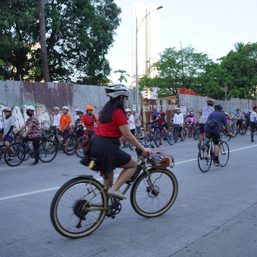
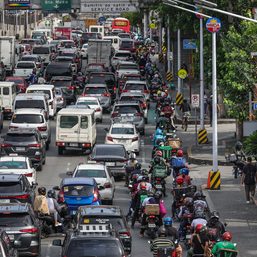
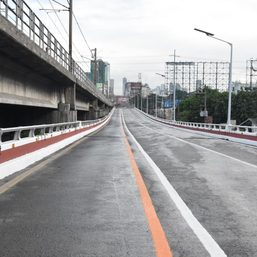
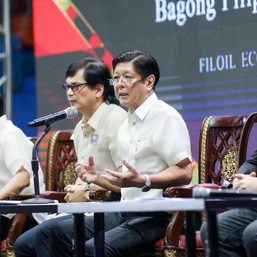
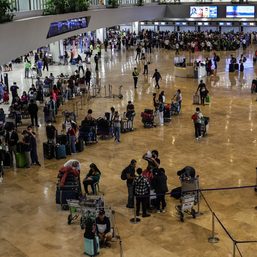













![[Under 3 Minutes] When will we see modern jeepneys on the road?](https://www.rappler.com/tachyon/2024/04/francisco-motors-modern-jeepney-prototype-1.jpg?resize=257%2C257&crop=590px%2C0px%2C1012px%2C1012px)





There are no comments yet. Add your comment to start the conversation.